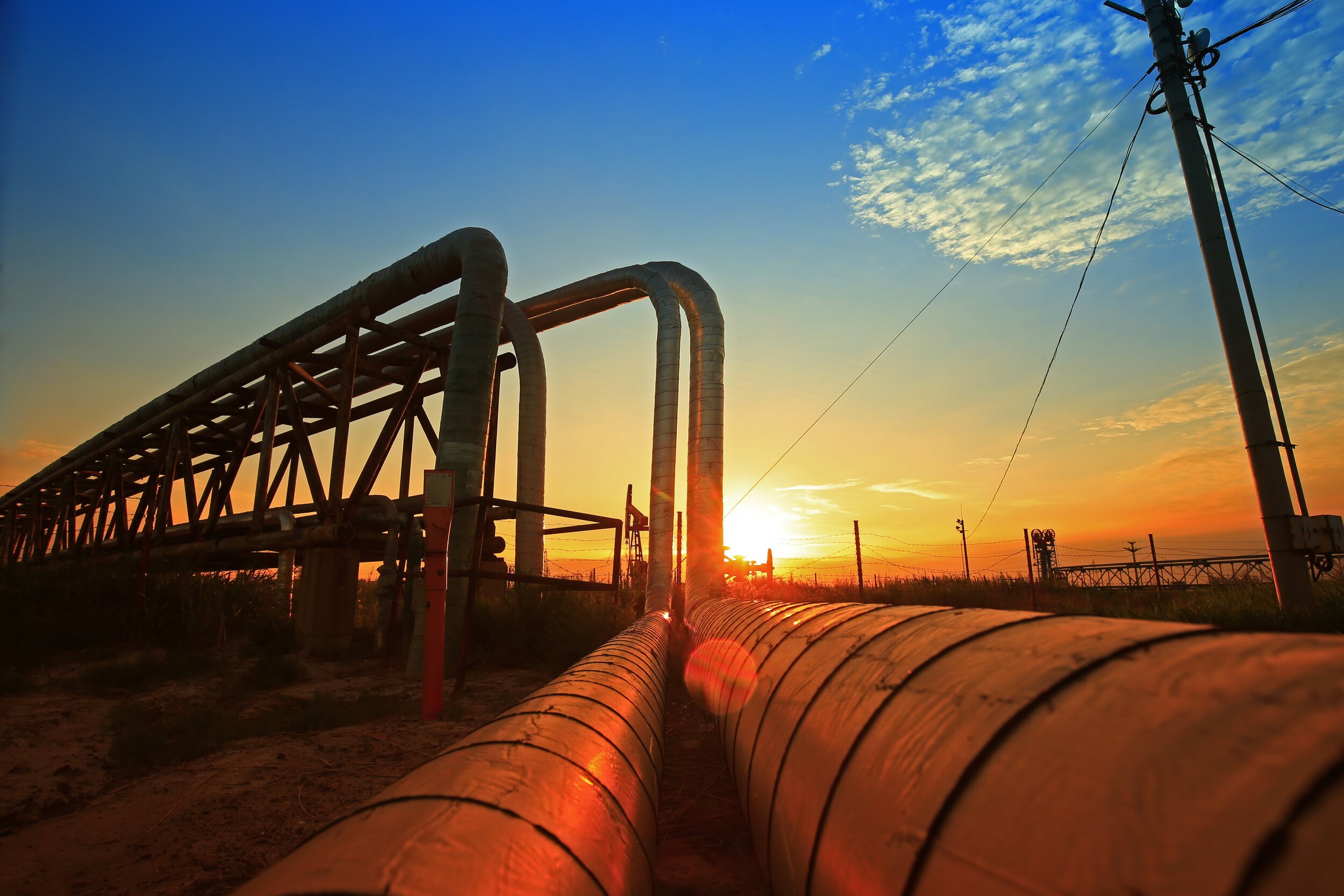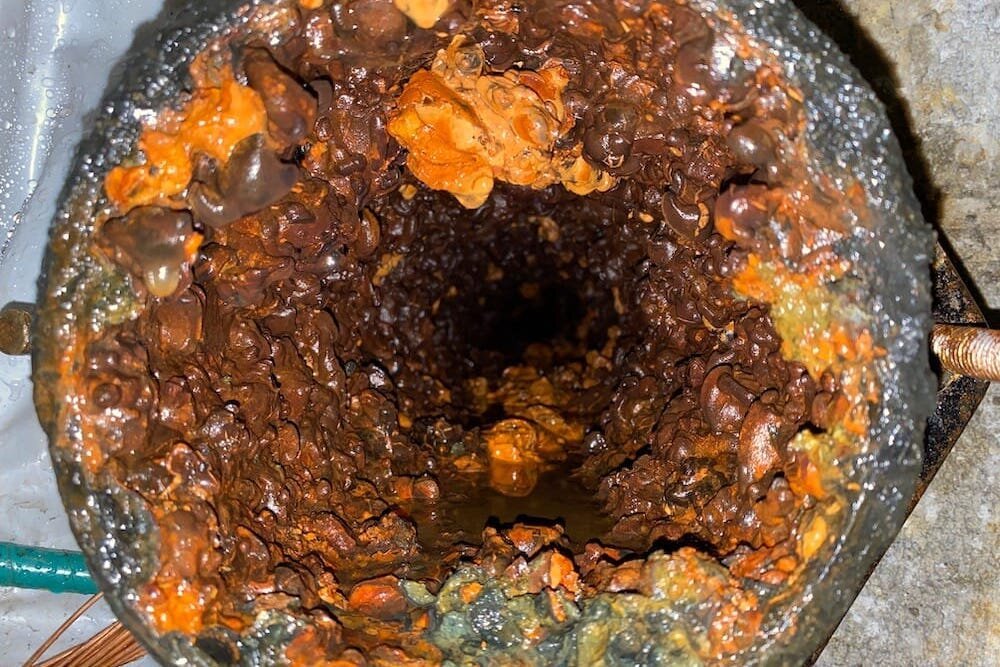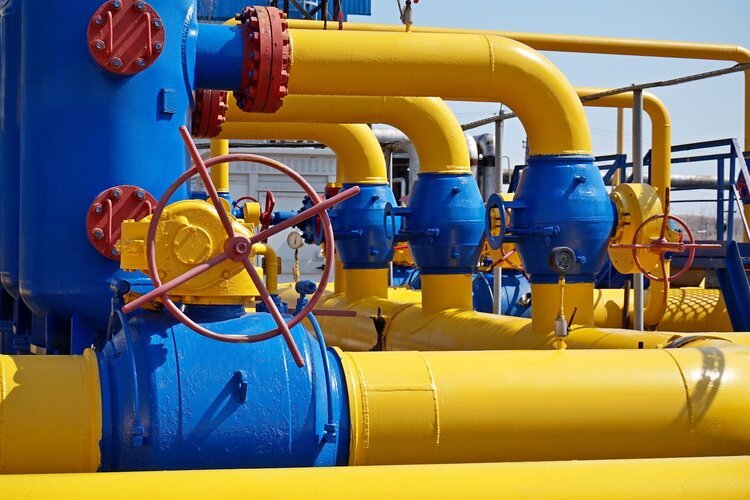
Pigging 4” - 60”
Keeping a pipeline clean is essential for safe, efficient, and cost-effective operation. Over time, every line faces challenges such as debris accumulation, wax deposits, corrosion, and scale. These issues, if ignored, can reduce flow, increase operating pressures, and eventually lead to costly downtime.
Pipeline pigging services provide a reliable and proven solution. At American Pipeline Solutions (APS), we offer pigging for pipelines ranging from 4 to 60 inches in diameter, helping operators restore performance, remove obstructions, and prevent recurring maintenance problems.
Why Pipeline Cleanliness Matters
No matter what type of product a pipeline carries—whether oil, gas, water, or industrial fluids—residues gradually build along the interior walls. Wax and paraffin are common in oil lines, while scale and tuberculation often appear in water systems. Older pipelines may experience rust or corrosion deposits, and multi-use lines can collect silt or sediment. Even biological growth can become a concern in untreated water pipelines.
These accumulations restrict the effective diameter of the pipe. As flow capacity decreases, pumps or compressors must work harder, operating pressures rise, and energy costs increase. Over time, the uneven flow and turbulence created by deposits accelerate internal wear. Regular pigging not only restores efficiency but also helps extend the service life of the system.
American Pipeline Solutions’ Pigging Process
APS has developed a structured pigging approach backed by more than 30 years of field experience. Each project begins with careful preparation. Our team brings all required equipment to the site, including pigs, custom-built launchers and receivers, pumps, hoses, transmitters, and monitoring devices.
After setup, the pig is prepared for deployment. A transmitter is placed inside the pig so it can be tracked as it moves through the pipeline. Above-ground monitors are installed along the route, ensuring that the pig’s progress is carefully followed.
Once ready, the pig is inserted into the launcher and driven into the line using water pressure from the pump. Throughout the run, technicians record both the pig’s location and the pressure inside the pipeline. This data provides valuable insight into system performance and is shared with the client after completion.
At the retrieval point, the pig is collected and the line is evaluated. If deposits remain, APS will conduct a second pass to ensure the pipeline is thoroughly cleaned.
What Pipeline Issues Can Pigging Address?
Pipeline pigging is one of the most versatile maintenance solutions available. Our services address a range of operational challenges, including:
Low flow rates caused by narrowing due to debris
Reduced flow capacity, restored to original specifications
High pressure drops, minimized by clearing restrictions
Blockages and obstructions, fully removed for reliable operation
Corrosion by-products such as rust, scale, or tuberculation
Routine maintenance, ensuring compliance and long-term reliability
In many cases, pigging not only restores performance but also provides valuable inspection data that helps operators plan future maintenance.
Pipeline Size and Material Considerations
While the material of a pipeline—whether steel, concrete, ductile iron, or PVC—can influence the pigging process, size typically has the greatest impact. APS has extensive experience working on pipelines from 4 inches up to 60 inches in diameter.
The density and type of pig are chosen based on the conditions of the line. A light-density pig offers flexibility for smaller or more delicate systems, while a medium-density pig balances strength with adaptability. For heavy cleaning jobs, a high-density pig delivers a more aggressive action capable of breaking through stubborn deposits. With decades of expertise, APS selects the most effective pigging solution for each unique project.
The Benefits of Pigging Services
Choosing APS for your pigging needs provides:
Improved efficiency – Restores optimal flow rates and reduces pumping costs
Extended pipeline life – Removes corrosive deposits that can damage infrastructure
Reduced downtime – Prevents costly blockages and emergency repairs
Detailed performance data – Monitored pressure and pig tracking for transparency
Customized solutions – Tailored pig selection and process design for your specific system
Whether your goal is routine maintenance or solving urgent pipeline pigging issues, APS has the expertise and equipment to deliver results.
Why Work with American Pipeline Solutions
APS is more than a pigging contractor—we are a trusted partner with decades of experience. Our team designs and builds much of our own pigging equipment, allowing us to customize solutions to meet specific client needs. From setup to monitoring, data collection, and verification, we manage the entire process with professionalism and precision.
Get Started with Pipeline Pigging
If your pipeline is experiencing issues such as low flow, rising pressure, or blockages, American Pipeline Solutions can help. Our pigging services provide a safe, efficient, and cost-effective way to restore your system and keep it performing at its best.
Contact APS today to discuss your pipeline pigging needs and learn how we can keep your infrastructure clean, efficient, and reliable.
FAQs:
What are pipeline pigging services?
Pipeline pigging services use specially designed tools called “pigs” to travel through a pipeline and clean the internal walls. As the pig moves, it pushes out debris, wax, scale, and other deposits that restrict flow. Pigging helps restore capacity, reduce pressure drop, and protect the system from corrosion-related damage and unplanned downtime.
How do I know my pipeline needs pigging?
Common warning signs include reduced flow rates, rising discharge pressure, frequent filter changes, or recurring blockages. You may also see higher energy costs as pumps or compressors work harder to move the same volume of product. If these issues appear, a pigging assessment can quickly determine whether internal deposits are affecting performance.
How does APS’s pigging process work?
APS mobilizes all required equipment to site, including pigs, launchers, receivers, pumps, hoses, transmitters, and monitoring devices. The pig is inserted into the launcher, tracked with a transmitter and above-ground monitors, and driven through the line using controlled pressure. Technicians record location and pressure throughout the run, then evaluate the retrieved pig and pipeline condition and perform additional passes if needed.
What pipeline sizes and materials can APS pig?
APS routinely pigs pipelines from 4 to 60 inches in diameter across a range of materials, including steel, concrete, ductile iron, and PVC. While material influences pig selection and procedure, diameter and internal condition usually have the greatest impact. APS chooses pig density and configuration based on your system’s design, deposits, and operating requirements.
Will pigging damage my pipeline or internal coatings?
When correctly designed and executed, pigging is a safe and non-destructive maintenance method. APS evaluates line material, coating type, age, and deposit load before selecting pig density and cleaning approach. Light- or medium-density pigs can be used in more delicate or newer systems, while higher-density pigs are reserved for heavy cleaning where the pipe can safely tolerate more aggressive action.
What issues can pigging services address?
Pigging can resolve a wide range of operational problems, including low flow, high pressure drop, localized blockages, and corrosion-related buildup such as rust, scale, or tuberculation. It’s also effective for removing wax and paraffin in oil lines and sediment in multi-use pipelines. In many cases, pigging restores performance and provides useful data for planning future maintenance.
How often should a pipeline be pigged?
There is no one schedule that fits every system. Optimal pigging frequency depends on product type, operating conditions, deposit tendencies, and regulatory or internal maintenance standards. Some lines may only need periodic cleaning, while others benefit from a regular pigging program. APS reviews performance trends and operating history to help you determine an appropriate interval.
What kind of data does APS provide after a pigging run?
APS records pig location, operating pressures, and general system behavior throughout each run. After retrieval, we assess debris type and volume, evaluate the cleaned condition of the line, and share our findings with the client. This information can highlight problem areas, confirm that cleaning objectives were met, and inform future inspection or maintenance plans.
Do you sell pigging equipment or only provide services?
APS operates a wide range of pigs, launchers, receivers, pumps, transmitters, and monitoring tools, but our core business is delivering pipeline pigging services. We design and execute pigging programs, manage the equipment in the field, and provide results and recommendations, rather than acting as a product retailer.
Can pigging be used for both routine maintenance and urgent problems?
Yes. Pigging is highly effective as part of a planned maintenance program and as a response to emerging issues like sudden blockages or unexplained pressure changes. APS can design routine pigging schedules to keep systems clean and efficient, or mobilize to address urgent flow or obstruction problems when they arise.
Are you looking for a fitting pigging solution for your pipeline?
Contact the team at American Pipeline Solutions and learn about our pipeline pigging services today.























